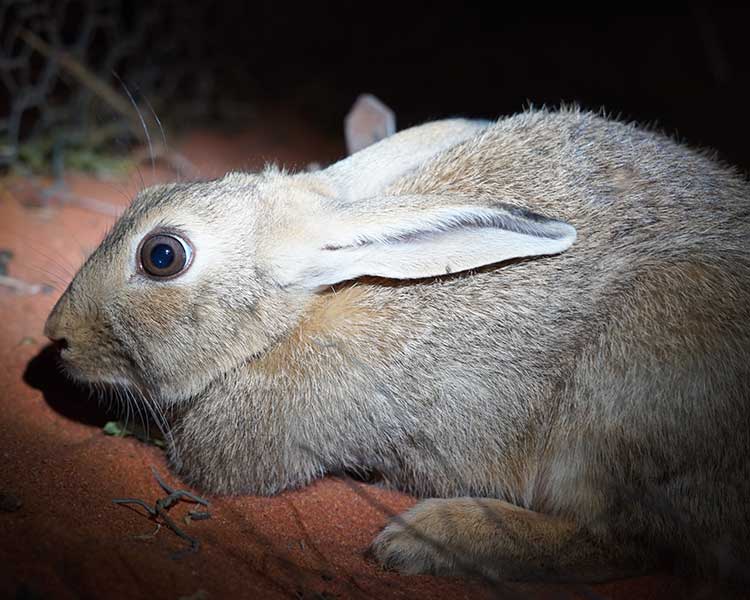
Australia’s 10 worst invasive species, study
Monday, 18 February 2019New research by the Threatened Species Recovery Hub has shown that invasive or pest species are a problem for 1,257 threatened species in Australia, or about four out of five species.
The research which has been published in the scientific journal Pacific Conservation Biology also identified the top ten invasive species based on how many threatened species they impact.
Lead researcher Stephen Kearney from the University of Queensland said many people may be surprised at which species top the list.
“Rabbits, a plant root disease and feral pigs are the top three pest species impacting Australia’s threatened species,” Mr Kearney said.
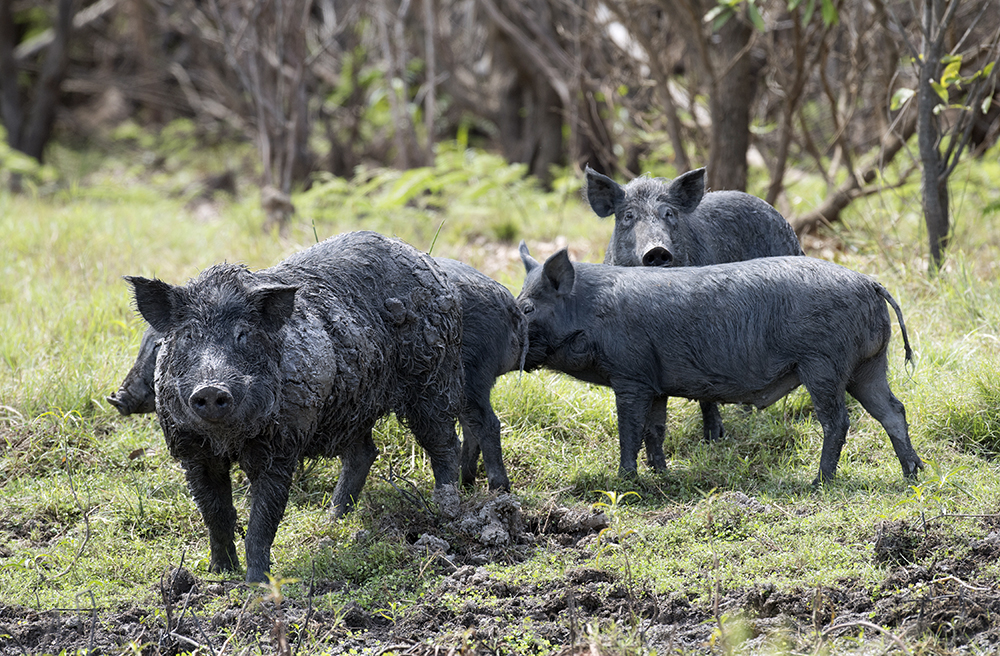 Feral pigs on the Mary River floodplain in the Northern Territory. In third place, feral pigs impact 149 threatened species in Australia. They both destroy habitat and directly kill threatened species. Photo: John Carnemolla / Shutterstock.com
Feral pigs on the Mary River floodplain in the Northern Territory. In third place, feral pigs impact 149 threatened species in Australia. They both destroy habitat and directly kill threatened species. Photo: John Carnemolla / Shutterstock.com
“Rabbits are our most destructive invasive species, impacting over 300 threatened species. In contrast, cats are a major threat to about 123 threatened species, and foxes, 95.
 Feral pigs on the Mary River floodplain in the Northern Territory. In third place, feral pigs impact 149 threatened species in Australia. They both destroy habitat and directly kill threatened species. Photo: John Carnemolla / Shutterstock.com
Feral pigs on the Mary River floodplain in the Northern Territory. In third place, feral pigs impact 149 threatened species in Australia. They both destroy habitat and directly kill threatened species. Photo: John Carnemolla / Shutterstock.com
“Rabbits are our most destructive invasive species, impacting over 300 threatened species. In contrast, cats are a major threat to about 123 threatened species, and foxes, 95.
“A key reason that rabbits impact such a very high number of native species is that they impact both threatened plants and animals.
“Rabbits destroy plants and can stop them regenerating by eating the seedlings, they compete with native grazing animals for food and even boost the number
of predators like cats and foxes.
“The second most problematic invasive species in Australia is a plant disease called phytophthora, which is also known as root rot fungus, which affects
over 200 threatened native plants.
“Feral pigs are in third place, affecting about 150 threatened species.
“Nationally we don’t often talk about feral pigs, but we should. Pigs destroy vast areas of crops, wetlands and floodplains in northern Australia. They
even dig up and eat sea turtle eggs and hatchlings along beaches.
Australia’s 10 worst invasive species
| European rabbit | 321 |
| Phytophthora plant disease | 236 |
| Feral pig | 149 |
| Feral cat | 123 |
| Feral goat | 116 |
| European red fox | 95 |
| Lantana | 95 |
| Blackberry | 47 |
| Black rat | 42 |
| Feral cattle | 39 |
Australia’s top 10 invasive species and the number of Australian threatened species they affect.
“Cats are in fourth place affecting 123 threatened species. They have a particularly devastating effect on Australia’s small to medium sized mammals, and
also impact many threatened birds and reptiles.
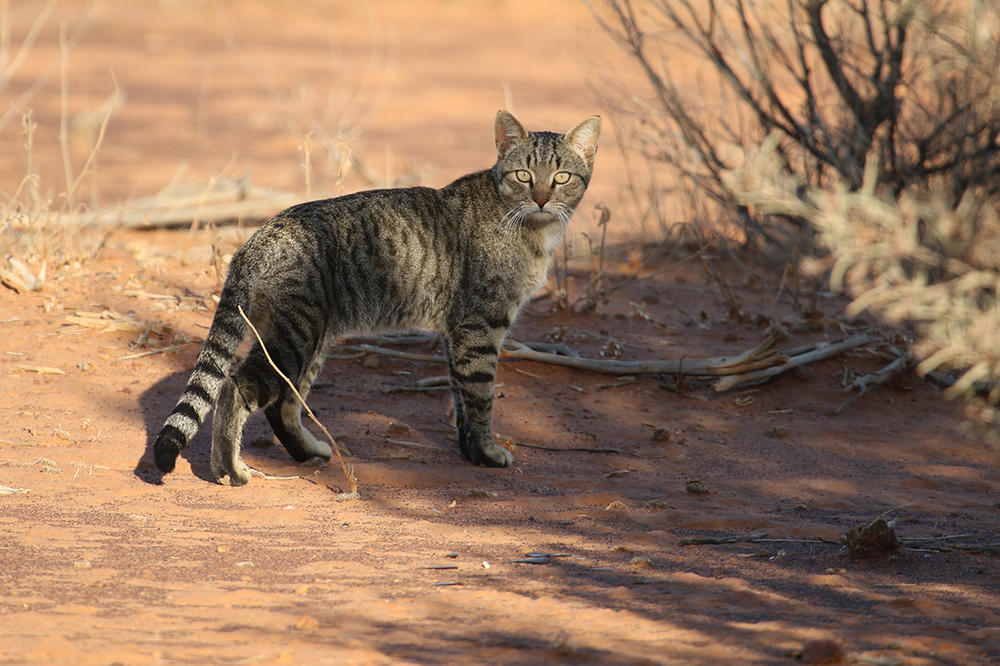 In fourth place, feral cats impact 123 native species in Australia. These efficient hunters are particularly devastating to small to medium sized mammals, ground-dwelling birds and reptiles. Photo: Stephen Kearney
In fourth place, feral cats impact 123 native species in Australia. These efficient hunters are particularly devastating to small to medium sized mammals, ground-dwelling birds and reptiles. Photo: Stephen Kearney
“Foxes, in equal sixth place, are frequently in the media, but feral goats, in fifth place, actually affect more threatened species, with 95 and 116 species impacted respectively.
 In fourth place, feral cats impact 123 native species in Australia. These efficient hunters are particularly devastating to small to medium sized mammals, ground-dwelling birds and reptiles. Photo: Stephen Kearney
In fourth place, feral cats impact 123 native species in Australia. These efficient hunters are particularly devastating to small to medium sized mammals, ground-dwelling birds and reptiles. Photo: Stephen Kearney
“Foxes, in equal sixth place, are frequently in the media, but feral goats, in fifth place, actually affect more threatened species, with 95 and 116 species impacted respectively.
“This does not mean foxes are not a problem, it means there are also other really problematic pests out there that as a community we have not been talking
about as much,” said Mr Kearney.
The other invasive species in the top ten are the weeds lantana and blackberry, and black rats and feral cattle.
More information is available in this research findings factsheet.
More information is available in this research findings factsheet.
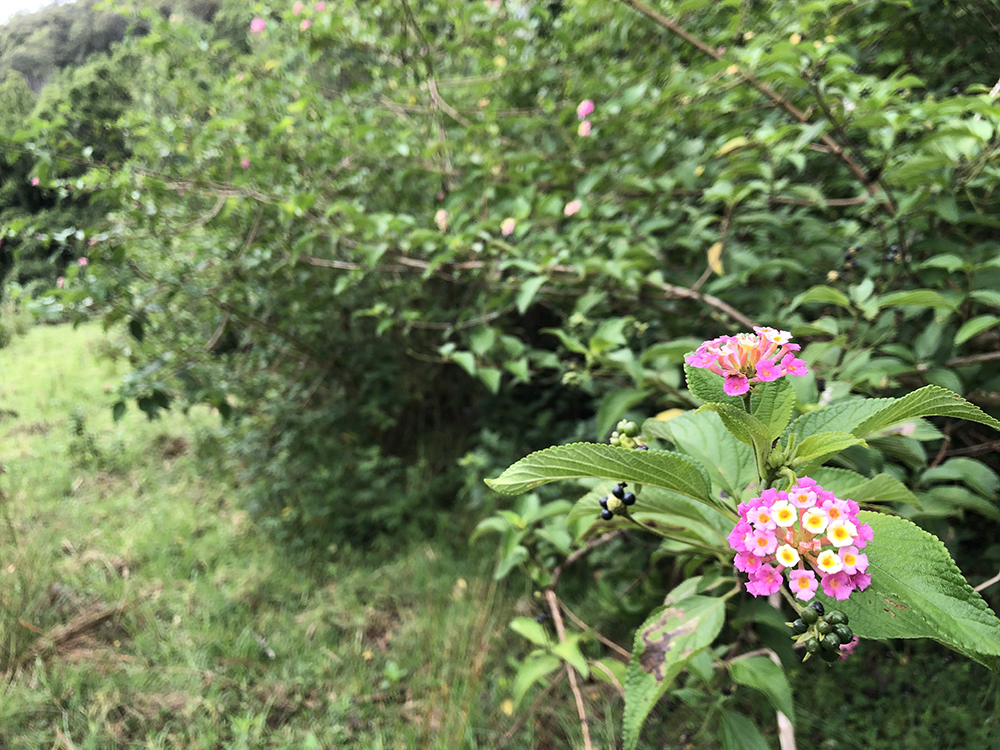
A dense stand of the invasive weed lantana at Lamington National Park. Lantana forms dense, impenetrable thickets that take over native bushland and pastures on the east coast of Australia. It impacts 95 threatened species in Australia. Photo: Jaana Dielenberg
The Threatened Species Recovery Hub is a collaboration of 10 leading Australian universities and the Australian Wildlife Conservancy to undertake research to support the recovery of Australia’s threatened species.
The Threatened Species Recovery Hub is a collaboration of 10 leading Australian universities and the Australian Wildlife Conservancy to undertake research to support the recovery of Australia’s threatened species.
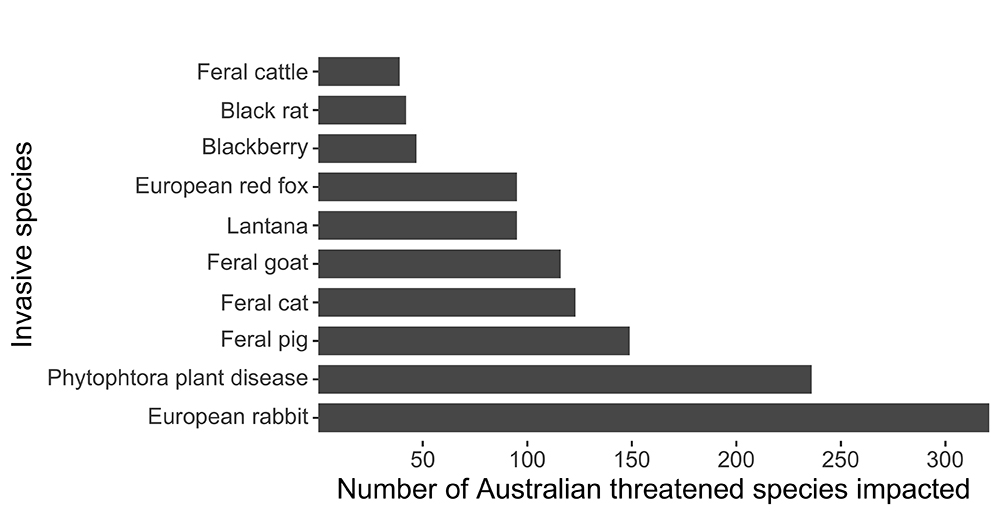
The top 10 invasive species in Australia, based on how many threatened species they impact.
Additional media inquiries:
Jaana Dielenberg, TSR Hub Communication Manager, 0413 585 709 j.dielenberg@uq.edu.au
Top image: Rabbits are Australia’s most dominant invasive species, impacting over 300 native threatened species. They destroy vegetation, prevent new seedling recruitment, compete for food with other grazers and boost feral predator numbers. Photo: Hugh McGregor / Arid recovery